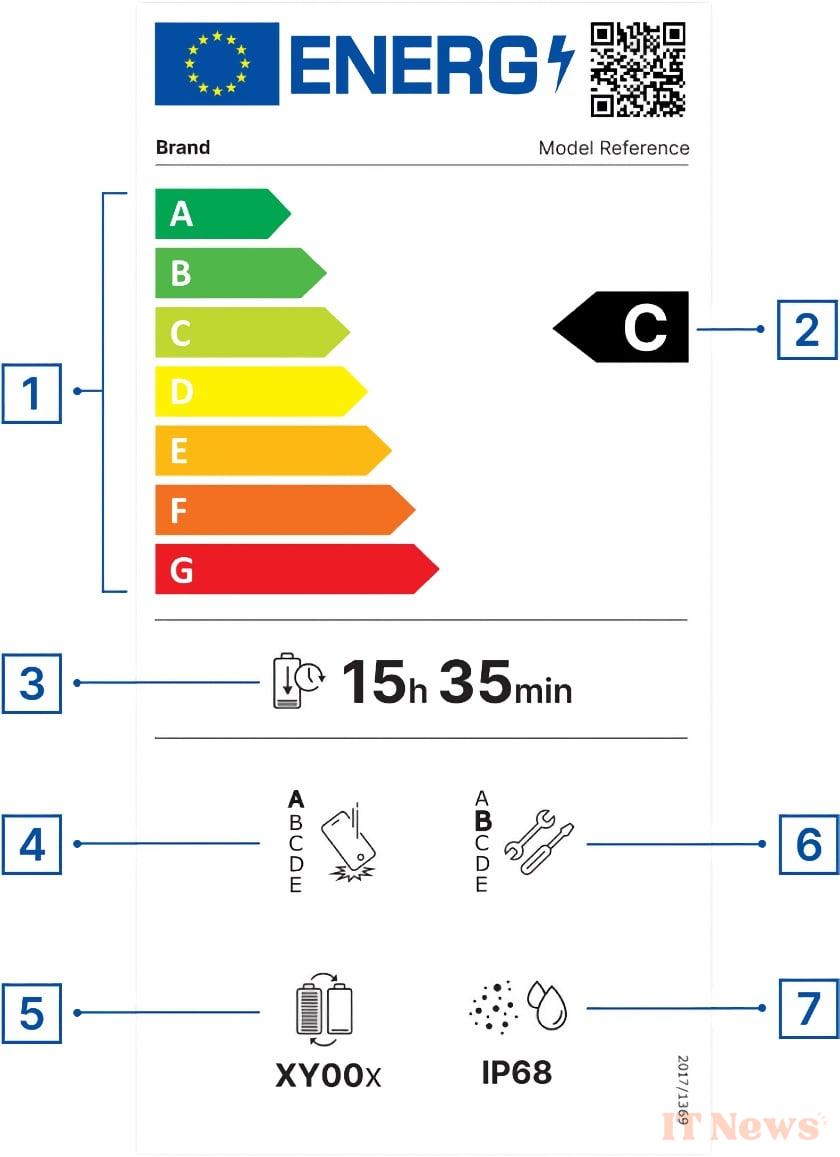No more blind purchases. Europe wants consumers to have all the information they need before buying a smartphone or tablet. Starting next summer, a new label will appear on the boxes of devices sold in the EU. It will not only cover energy consumption, but also durability, repairability, and endurance.
A sticker to help you choose your phone
Specifically, six pieces of information will appear on this label: the efficiency class energy (like a fridge), battery life (in hours and minutes), durability in the event of a fall, the number of recharge cycles the battery can withstand without weakening too much, repairability (on a clear scale) and the water and dust protection index (IP).
This famous criterion of “cycles” is crucial. It is the number of times a device can be fully recharged before the battery begins to seriously fatigue. To be sold in the EU, a phone or tablet battery must now last at least 800 cycles while retaining at least 80% of its initial capacity. In other words: you should be able to charge your smartphone every day for more than two years without seeing its battery life plummet. This is a real pressure on manufacturers, who sometimes relied on fragile batteries to encourage rapid device renewal.
This applies to smartphones with screens between 4 and 7 inches, and tablets between 7 and 17.4 inches, provided they do not have a physical keyboard. Don't panic if you have a Surface or iPad Pro with a keyboard: it still falls through the cracks. The same goes for models with a foldable screen or those reserved for ultra-secure uses.
At the same time, brands will have to comply with new obligations to make their products more durable. And there's no question of keeping spare parts under lock and key: they must be available quickly (within ten days) and for seven years after the model is discontinued. Updates Software updates will also have to follow for at least five years.
The goal is to extend the lifespan of devices, prevent them from ending up too quickly at the bottom of a drawer or in a landfill, and allow consumers to save money. According to the European Commission, these new rules could represent savings of up to 20 billion euros for households by 2030, or around a hundred euros per household.
Side In addition to environmental protection, Europe also hopes to reduce its energy bill: up to 2.2 TWh of electricity saved by 2030. A small step for each phone, but a significant boost across the continent. An initial assessment is planned for 2027, just to see if the promises hold up.




0 Comments